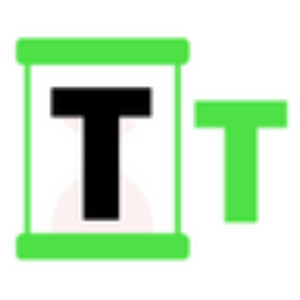How Ripple Could Become One of the Largest United States Treasury Holders
4 min read
As regulatory clarity around stablecoins in the U.S. takes shape, Ripple is emerging as a strategic contender in a sector that could soon wield immense influence over the U.S. Treasury market. With the rollout of its stablecoin and reported acquisition efforts targeting Circle, the issuer of USDC, Ripple could be positioning itself to become a dominant holder of U.S. government debt. Ripple’s Growing Interest in Stablecoins Ripple made its official entrance into the stablecoin ecosystem in late 2024 with the launch of RLUSD , a dollar-backed token structured similarly to its top competitors. The backing model for RLUSD includes U.S. Treasury securities, fiat dollar reserves, and near-cash instruments—mirroring the practices of leading stablecoin issuers such as Tether and Circle. Within just half a year, RLUSD has already amassed a circulating supply valued at over $321 million, placing it in the top tier of global stablecoins. But Ripple’s ambitions seem to extend far beyond just launching a token—it is seeking to broaden its stablecoin reach dramatically. Strategic Ambitions: Ripple’s Bid for Circle Per previous report, Ripple extended a $4–5 billion offer to acquire Circle , the company behind USDC, the second-largest stablecoin by market capitalization. Though Circle ultimately declined the offer, the bid underscores Ripple’s desire to expand its footprint within the digital dollar ecosystem. Circle, which filed for a $5 billion IPO in April 2025, has also held separate discussions with Coinbase, a company with which it shares governance rights and revenue from USDC. While Coinbase appears to be a more natural acquirer, Ripple’s substantial reserves—including an estimated $13 billion worth of XRP and access to an additional $86 billion held in escrow—give it the financial power to pursue major acquisitions. U.S. Legislation Sets the Stage for Stablecoin-Backed Treasuries The evolving regulatory landscape is a key catalyst for Ripple’s strategic moves. The GENIUS Act, which has made significant progress in the Senate with bipartisan backing, proposes a comprehensive legal framework for stablecoin issuance in the United States. With a 66–32 procedural vote moving it toward the Senate floor, the bill represents a major turning point for digital asset regulation. If passed, it could legitimize stablecoins as mainstream financial instruments, requiring issuers to maintain robust reserves, likely composed heavily of U.S. Treasury bills. U.S. Treasuries: The New Battleground for Stablecoin Dominance According to Senator Bill Hagerty , stablecoin issuers are on track to become some of the largest holders of U.S. government debt by the end of the decade. Citing insights from Citibank, Hagerty pointed out that as stablecoins grow in market share, so too will their Treasury holdings—echoing the way money market funds operate today. Stablecoin issuers will be the largest holders of U.S. treasuries in the world. pic.twitter.com/Z8uoYdhmcs — Senator Bill Hagerty (@SenatorHagerty) May 19, 2025 At present, issuers like Tether and Circle collectively hold approximately $150 billion in U.S. debt instruments. Yet with industry forecasts predicting a $2 trillion stablecoin market by 2028, the demand for Treasuries could skyrocket. Citibank projects that stablecoin entities could soon surpass the Treasury holdings of any single foreign country. We are on twitter, follow us to connect with us :- @TimesTabloid1 — TimesTabloid (@TimesTabloid1) July 15, 2023 Ripple’s Potential Trajectory as a Treasury Powerhouse Should Ripple succeed in scaling RLUSD and eventually securing ownership or influence over USDC, it would be in a position to control reserve pools worth tens—if not hundreds—of billions of dollars. These reserves, largely held in short-term U.S. Treasuries, would be necessary to ensure price stability, regulatory compliance, and user confidence. While Tether is currently the leading private holder of U.S. government securities, Ripple’s regulatory posture and deep financial resources could make it a preferred issuer in the eyes of both lawmakers and institutions, especially under stricter legal frameworks. A Quiet Revolution in Treasury Markets Ripple’s evolving role in the stablecoin industry could dramatically reshape the landscape of U.S. debt markets. With regulation aligning and the company aggressively expanding its influence, Ripple may well become one of the largest private holders of U.S. Treasuries, not just to support RLUSD but as a cornerstone in a rapidly digitizing financial system. As digital dollars become globally sought-after assets, Ripple’s strategic moves today could translate into unprecedented financial clout tomorrow, anchored by the most trusted instruments in global finance: U.S. Treasury bills. Disclaimer : This content is meant to inform and should not be considered financial advice. The views expressed in this article may include the author’s personal opinions and do not represent Times Tabloid’s opinion. Readers are urged to do in-depth research before making any investment decisions. Any action taken by the reader is strictly at their own risk. Times Tabloid is not responsible for any financial losses. Follow us on Twitter , Facebook , Telegram , and Google News The post How Ripple Could Become One of the Largest United States Treasury Holders appeared first on Times Tabloid .

Source: TimesTabloid



